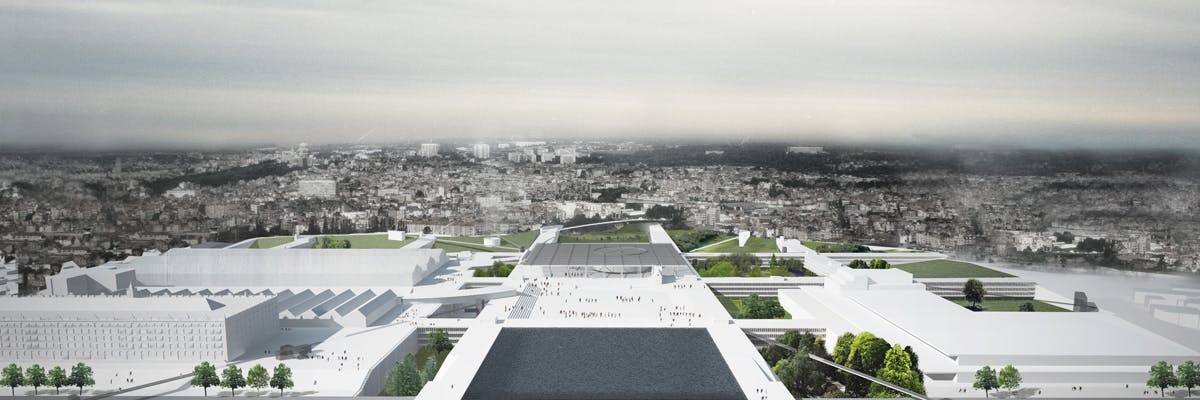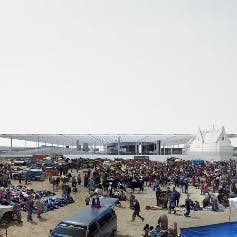Written by Matthew Barac and Andrew Dawes
This essay was published in the Architectural Review on 23 October 2012
Pedagogy: TU Delft
TU Delft continues to act as a powerhouse of radical Dutch design
Dutch design was everywhere in the 1990s. Projects built in Rotterdam or Almere were imitated worldwide as cutting-edge ideas radiated out from the Netherlands; weighty books and glossy magazines celebrated an idiom that commentator Bart Lootsma called ‘SuperDutch’.
Following in the pioneering footsteps of Rem Koolhaas, their erstwhile godfather, a young generation of designers developed a slick yet unsentimental architectural genre that seemed able to adapt to the rapidly-changing market. Innovative and conceptual, the new approach refashioned the design agenda, and although truly international it did not sacrifice the matter-of-fact humility associated with Dutch tradition.
While Koolhaas may have kick-started this outburst of energy, it was also driven by political and economic changes such as increased globalisation and the widening EU market. Located in the Randstad, a continuous conurbation that is one of Europe’s most populated urban areas, Delft provided a natural anchor for much of this productive activity. With nearly 3,000 students, the Technical University (TU) operates as the nation’s powerhouse for architectural education. Many of these students were, at that time, working for offices at the forefront of the movement − such as OMA, West 8 or MVRDV− and the desire for typological and technical experiment prevalent in such practices was central to studio debate at Delft.
Experimental pedagogy has long been linked to innovative professional practice at the university, which counts among its emeritus faculty key characters of European Modernism, such as Jaap Bakema, Aldo van Eyck and Herman Hertzberger. Through work with or links to Team 10, the loose-knit but influential group of mid-century Modernists, they promoted a nuanced interpretation of functionalism that Dick van Gameren, Chair of Housing at Delft, celebrates in his teaching today. Consciously ‘following in the steps of Bakema and the Smithsons’, Van Gameren maintains the tradition of critically evaluating and analysing Modernist assumptions.
Emphasising the importance of housing in Dutch debate, he prioritises ‘the connection between building and context, making the link between the house and the city’. But there has never been a consensus at Delft. Van Gameren’s is one of a choice of studios for students. According to Michiel Riedijk, Chair of Architectural Composition, ‘this supermarket approach emphasises that architecture is not stylistic but addresses the typological, cultural and material’.
Investigating the successes and failures of utopian ideals in terms of the vision of a European capital city, Riedijk’s most recent studio looked at Brussels. Students addressed the discrepancy between civic ideals (as embodied in the EU charter) and the reality of some of the city’s impoverished neighbourhoods (and lack of EU support).
His own studio challenges the utopianism in much architectural dogma with hard-boiled Dutch pragmatism. The school concentrates on the transfer of design skills and knowledge in the three-year Bachelor’s degree, which is taught in Dutch. The final two-year Master’s course, taught in English, is more internationally orientated and encourages students to develop an architectural position in relation to cultural debate and the wider society.
One student, Minhong Khor, responded with a series of megastructures that elevate public space, reconnecting it to the local community to bridge between structures of European identity and local settings. With a focus on the relationship between elected representatives and the public, Timur Karimullin’s design for a European Parliament grapples with the challenge of articulating between a massive institutional programme and the finely-grained urban context.
Van Gameren studio’s, ‘At Home in the City’, returns to the enduring theme of dwelling in the city. In a design that softens the boundaries between private and public domains and reimagines homecoming as a sensory experience, Jasper Spigt aims for a gradual entanglement of openness and intimacy.
Alessandra Covini’s project, part of a wider research investigation of mass-housing strategies in exploding cities, incorporates local rammed-earth technology into a kasbah-like proposal for affordable housing in Addis Ababa. Timber formwork is recycled as cabinets and furniture inside the dwellings.
Riedijk contends that ‘a common denominator at the school is craft and the teaching of design as tacit knowledge’. An enormous model workshop at the heart of the faculty and a library at its entrance underpin the pedagogical importance of understanding and making, of knowledge and history; an internal street (a motif recalling Team 10) that runs along the length of the building emphasises access. Balancing Dutch pragmatism and tradition, while orientating itself towards an increasingly international position, Delft connects a range of voices with a shared set of values.


